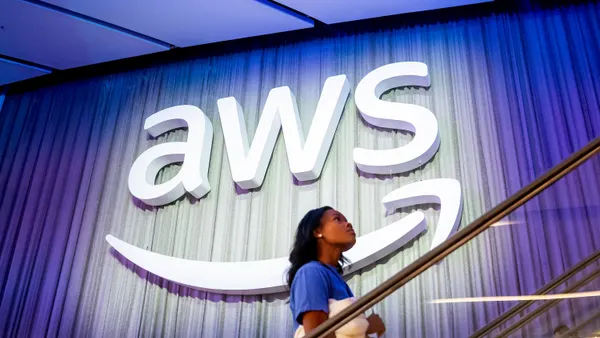Technobabble is our look at the more colorful aspects of technology and the tech industry. Be sure to check out our most recent edition featuring George AI Martin.
Would you trade a day with your iPhone for a day with Beyoncé? Probably not, according to recent studies.
The phrase "glued to smartphones" has become all too common. One needs only to walk down a city sidewalk during rush hour and to try avoiding the pedestrian obstacles that do not look up from their screens for a second in order to understand the saying.
Wired reporter Katie Hafner's recent first-person account on the addictive effects of smartphone usage — turning her into a "squirrel-chasing dog" with her phone — and the rehabilitative measures she is taking to lessen them almost sounds realistic enough to be mistaken as a serious case study. The underlying point the author is making, however, holds more than one grain of truth.
Estimates place daily cell phone usage in the U.S. between 2.37 hours a day, according to the analytics firm Flurry and BizReport. Flurry also reported a 69% year-over-year growth in time spent on mobile apps.
The finger typically points to millennials when criticisms of technology usage arise, and evidence of generational proclivity for smartphone dependency is not hard to find. One-quarter of millennials spend 5 hours a day on their phone and half of them spend at least three hours, according to BizReport.
What can people possibly be doing for this long on smartphones? Time spent is split 92% and 8% between apps and browsers, respectively, according to Flurry. Facebook takes home the crown with 19% of users’ time; other social media platforms combine for another 17% of time spent. Music, media and entertainment and gaming are the next largest categories at 14% and 11%, respectively.
Smartphone usage extends far beyond individual's personal lives. The average office employee devotes close to one hour of their workday to non-work activities on smartphones, according to a 2017 OfficeTeam survey. Millennials at ages 18 to 34 used smartphones more than the average population, spending about 70 minutes each workday on non-work activities, the survey found.
Close to 85% of users were found to have their smartphone within reach at all times — including work, according to BizReport. Nearly three-quarters admitted they would not trade a day with their smartphone for a day with their favorite celebrity, and one-quarter reported feelings of stress, loss or sadness when away from their phones.
The Internet of Things is adding billions of devices connected online to the market, and the opportunities for technological distraction are only increasing. As Americans try to stay present in the real world amidst this change, Hafner offers some useful advice: "My therapy, of my own devising, consists of serial mono-tasking with a big dose of mindful intent, or intentional mindfulness — which is really just good, old-fashioned paying attention."
One macro thing
For Amazon, Seattle might be getting a little too crowded. The mega company announced its plans for Amazon Headquarters 2 with an estimated construction investment of $5 billion and the possibility of 50,000 new employees. The exact location is unknown but HQ2 will remain in somewhere in North America.
In fact, it’s asking for proposals from cities across North America to vie for a chance at housing a possible economic blessing. The construction alone will harvest thousands of jobs and Amazon knows cities will be willing to provide the efforts. Once proposals are closed in October, Amazon will announce its HQ2 location in 2018.
What Are Washington’s Chances in the Amazon Sweepstakes? Not Terrible, Actually.https://t.co/Pdrgt4OZzC
— Washingtonian (@washingtonian) September 8, 2017
Currently, the Seattle headquarters house over 40,000 employees which Amazon pays about $43 million to the city for its employees’ transportation costs. From 2010 to 2016, Amazon is credited with adding $38 billion to Seattle’s economy. If this isn’t enough allure for a city, perhaps the infamous Seattle headquarters’ banana stand will encourage a proposal.
The banana stand – a Jeff Bezos idea – is a daily stand outside the Seattle headquarters that hands out free bananas to anyone that passes by. As of right now, there is no confirmation a banana stand will be open at the HQ2 location, but one can only hope.
One micro thing
Researchers from Zhejiang University created a virtual voice assistant equivalent of a dog whistle, according to Co.Design.
DolphinAttack is a manipulation of the human voice and its commands producing "ultrasonic frequencies" which cannot be picked up by the human ear. The frequencies are instead heard and processed by the ever-present voice-activated assistants — including Alexa, Siri, Cortana.
DolphinAttack can infiltrate devices and carry out a variety of tasks on it, whether that be texting an unknown number or opening an email with malware attached.
Consumers may be unaware that while they are not constantly speaking with their devices, the devices themselves are constantly listening. Although DolphinAttack can only work within inches, and in the Apple watch's case, just feet from a device, it would only take a simple stroll down a busy sidewalk to send the frequency to "listening" devices.
According to the researchers, microphones within virtual assistant devices are too sensitive and too common for total protection. Software has to be developed to enable a device to distinguish pitch differences between humans and ultrasonic dog whistles.
This realization comes at a time when Apple is working to naturalize Siri's voice. Alex Acero, an Apple executive responsible for Siri's tech, was inspired by the film Her and Scarlett Johansson's voicing of Samantha, a voice assistant similar to Siri. Siri's revamped vocals will debut with the iOS 11 release in the fall. Her voice, while offering no new phrases or jokes, will feature better natural fluidity and inflection.
The solution for Siri's natural voice was found in the software and the same can be true for potential DolphinAttacks.
One last thing
Sign stealing is a long standing tradition in baseball games, but this Tuesday, The New York Times brought to light a modern take on the devious practice: Apple Watches.
The New York Yankees caught on video Boston Red Sox players using the smartwatches to relay signals about what type of pitch the Yankees were about to throw during a three-game series in August. Spies, cameras and even telescopes were used in the past, but this incident highlights an unusual incorporation of mobile technology into sports events.
Apple watches offered a unique edge to the Red Sox because rather than having to relay information to players in the dugout by foot — which takes up time in a situation where every second counts before the knowledge becomes irrelevant — they were able to quickly and immediately transfer it between video personnel, trainers and players.
The MLB is currently conducting an inquiry into the sign stealing, and Commissioner Rob Manfred has yet to announce plans for a more thorough investigation or possible penalties.













